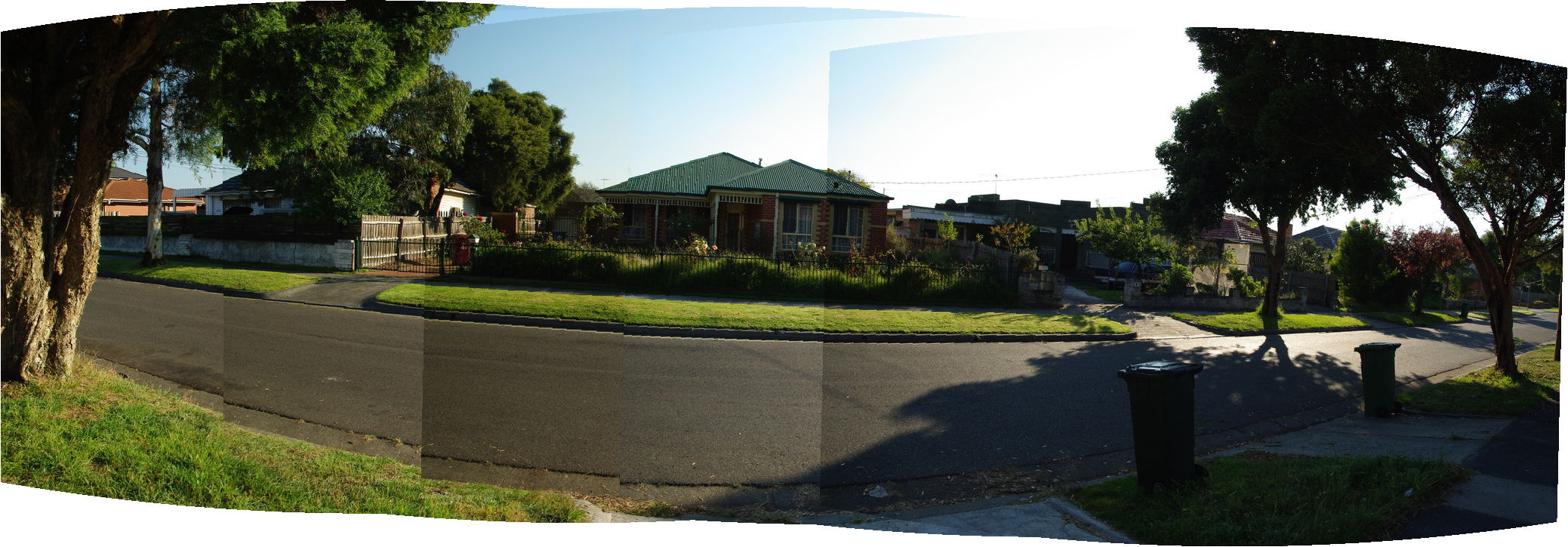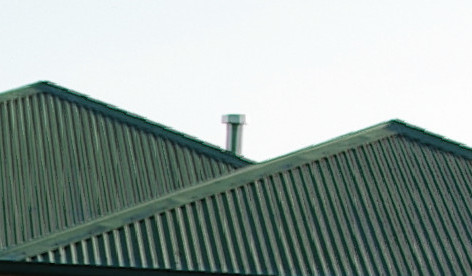Last Updated on June 23, 2020 by nghiaho12
In the past I’ve received emails from people on the OpenCV Yahoo group asking for help on panoramic stitching, to which I answered them to the best of my knowledge, though the answers were theoretical. Being the practical man I like to think of myself, I decided to finally get down and dirty and write a simple panoramic stitcher that should help beginners venturing into panoramic stitching. In the process of doing so I learned some new things along the way. I believe OpenCV is scheduled to include some sort of panoramic stitching engine in future release. In the meantime you can check out my Simple Pano Stitcher program here:
Last update: 31/03/2014
Download SimplePanoStitcher-0.2.0.zip
It uses OpenCV to do fundamental image processing stuff and includes a public domain Levenberg-Marquardt non-linear solver.
To compile the code just type make and run bin/Release/SimplePanoStitcher. It will output a bunch of layer-xxx.png images as output. I’ve included sample images in the sample directory, which the program uses by default. Edit the source code to load your own images. You’ll need to know the focal length in pixels used to capture each image.
To keep things simple I only wrote the bare minimum to get it up and running, for more information check the comments in main.cpp at the top of the file.
Results with Simple Pano Stitcher
Below is a sample result I got after combining all the layers, by simply pasting them on top of each other. No fancy blending or anything. On close inspection there is some noticeable parallax. If I had taken it on a tripod instead of hand held it should be less noticeable.

Discussion
One of the crucial steps to getting good results is the non-linear optimisation step. I decided to optimise the focal length, yaw, pitch, and roll for each image. A total of 4 parameters. I thought it would be interesting to compare results with and without any optimisation. For comparison I’ll be using the full size images (3872 x 2592), which is not included in the sample directory to keep the package size reasonable. Below shows a close up section of the roof of the house without optimisation.

The root mean squared error reported is 22.5008 pixels. The results are without a doubt awful! Looking at it too long would cause me to require new glasses with a stronger optical prescription. I’ll now turn on the non-linear optimisation step for the 4 parameters mentioned previously. Below is what we get.

The reported root mean squared error is 3.84413 pixels. Much better! Not perfect, but much more pleasant to look at than the previous image.
There is no doubt a vast improvement by introducing non-linear optimisation to panoramic stitching. One can improve the results further by taking into consideration for radial distortion, but I’ll leave that as an exercise to the reader.
I originally got the focal length for my camera lens from calibration using the sample program (calibration.cpp) in the OpenCV 2.x directory. It performs a standard calibration using a checkerboard pattern. Yet even then its accuracy is still a bit off. This got me thinking a bit. Can we use panoramic stitching to refine the focal length? What are the pros and cons? The images used in the stitching process should ideally be scenery with features that are very very far, so that parallax is not an issue, such as outdoor landscape of mountains or something. Seems obvious enough, there are probably papers out there but I’m too lazy to check at this moment …